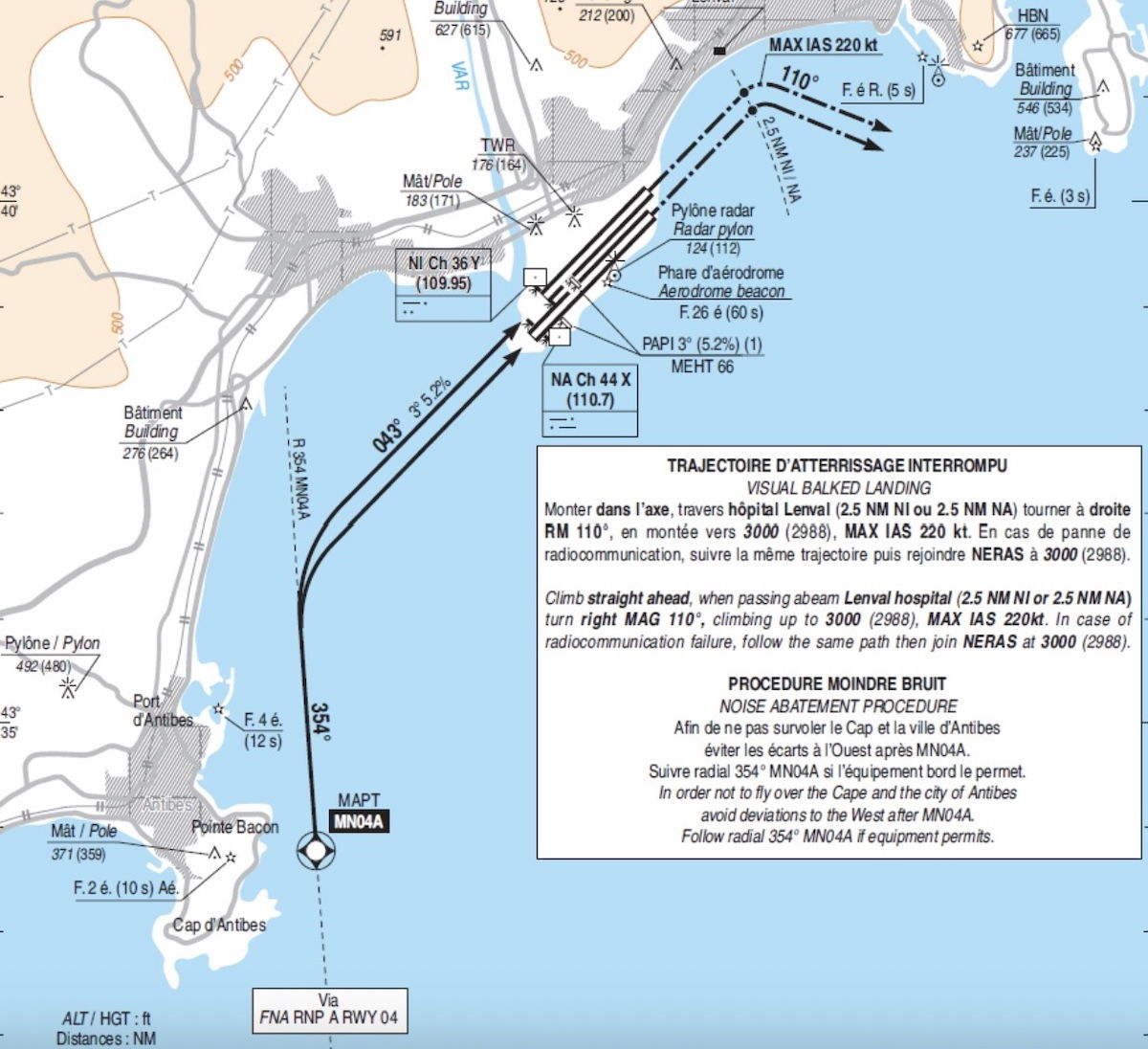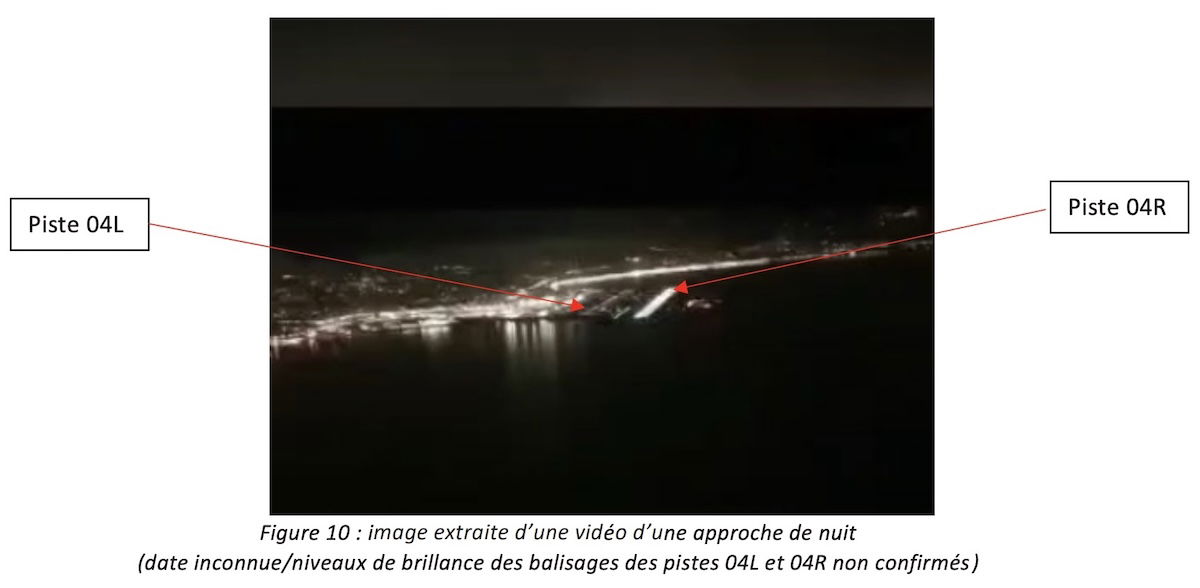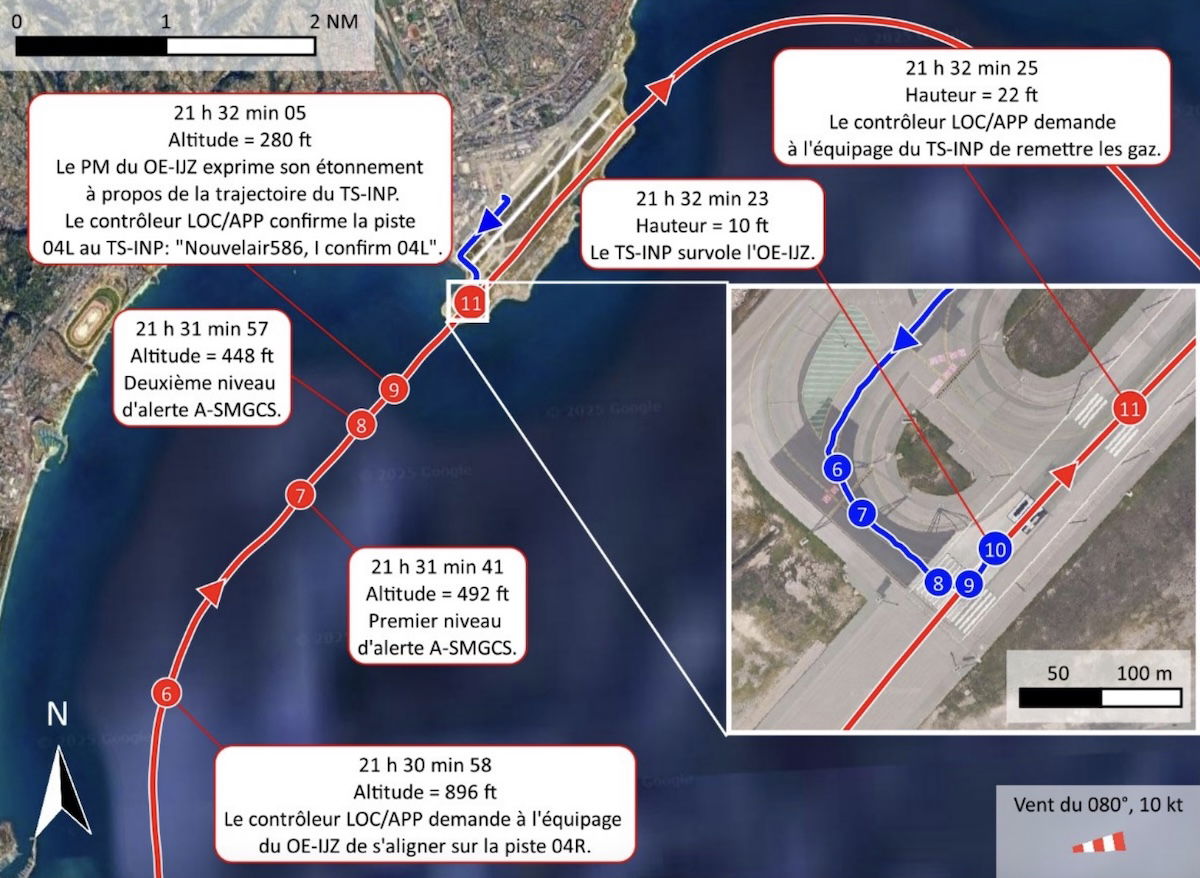We constantly hear about close calls in aviation. I think it’s easy to become desensitized to these, and wonder which are actually dangerous, and which are just a bit too close for comfort.
Roughly a month ago, there was one of the closest calls that we’ve seen in a long time, whereby two planes came within roughly 10 feet of one another on a runway, while one plane was landing. Well, a preliminary report into the incident has now been released by investigators, and it makes this story even wilder than we initially thought (if that’s even possible?!)
In this post:
Catastrophe narrowly avoided at Nice Côte d’Azur Airport
First let’s cover the basics of the incident, as we knew them at the time. This incident happened very late at night (around 11:30PM local time) on Sunday, September 21, 2025, at Nice Côte d’Azur Airport (NCE), in the south of France. It involves two aircraft:
- A Nouvelair Airbus A320 with the registration code TS-INP was performing flight BJ586 from Tunis (TUN)
- An EasyJet Airbus A320 with the registration code OE-IJZ was performing flight U24706 to Nantes (NTE)
The Nouvelair A320 had been cleared to land on runway 4L, while the EasyJet Airbus A320 had been cleared to line up and wait on runway 4R, and was just taxiing into position on the runway. Just to clarify, those two runways are parallel to one another (at a heading of roughly 40 degrees), with 4L being to the left, and 4R being to the right.
All of that sounds fine, except for one little issue. The Nouvelair pilots accidentally lined up their plane with runway 4R instead of runway 4L, with the former runway being occupied by the EasyJet plane.
According to ADS-B data, the Nouvelair A320 crossed the runway threshold at 50 feet above ground level, and only initiated a go around six seconds later. An A320 has a tail height of over 41 feet, so the planes literally missed one another by a matter of feet. This isn’t some “oh it was sort of a close call” situation. Instead, this was a split second from being one of the worst aviation disasters that we’ve seen in a very long time.
The EasyJet plane subsequently exited the runway and returned to the apron, and the flight was ultimately canceled. Meanwhile the Nouvelair plane performed a go around, and then landed without incident, roughly 12 minutes later.
EasyJet passengers reported hearing a loud noise and strong vibrations in the plane, and the EasyJet captain also reportedly informed passengers that the other A320 had overflown them by three meters.
Weather conditions at the time of the incident weren’t good at all — there was strong precipitation and limited visibility, which no doubt contributed to this situation.
Following the incident, Nouvelair issued a statement regarding the close call, claiming this occurred “under particularly challenging weather conditions, marked by very heavy rain and extremely reduced visibility.” The airline emphasizes that it has been operating for over 36 years, and claims that “safety and security of its passengers and crew remain its top priority.”
What an investigation into this incident has revealed
France’s BEA, which investigates incidents and accidents involving aircraft, has just published its preliminary report about this incident, and it makes this even stranger than we initially thought.
First of all, how did the pilots make the mistake of lining up with runway 4R instead or runway 4L, as assigned? Well, there were several contributing factors:
- The crew was cleared for an RNP (Required Navigation Performance) approach for runway 4L, and it’s worth noting that up until 850 feet of altitude, the RNP for runway 4L and 4R are identical
- The air traffic controller specifically asked the pilots to confirm they were lined up for runway 4L around one mile from the runway, which they confirmed
- The runway 4R landing lights were set to the lowest intensity, and the PAPI lights for the runway were turned off, while they were on for runway 4L; however, 4R still looked brighter to the pilots than 4L
- The pilots had a big workload on their final approach; one minute before the incident, they were still in a turn and passing 1,000 feet, descending at 1,100 feet per minute, so there was obviously a lot going on


Here’s what makes this even wilder. We had assumed that the Nouvelair pilots performed a go around because they saw the plane on the runway, and then pulled up at the last minute. Nope, that’s not the case. As it turns out, they actually had no clue there was a plane on the runway, and that was just serious luck.
A controller instructed the Nouvelair A320 crew to go around moments after it overflew the EasyJet plane on the runway. So it was pure luck that the Nouvelair pilots didn’t approach just 10 feet lower, or else the outcome would’ve been catastrophic.

What an absolute mess of an incident all around. Aviation is supposed to have the “Swiss cheese model” for avoiding catastrophes, and in this case, it was just complete dumb luck that there wasn’t an accident that claimed hundreds of lives.
The thing is, individually you could see how the pilots could make each of these mistakes along the way. The weather wasn’t great, the approach required a lot of maneuvers at the last minute, the runway lighting intensity may have thrown off the pilots, etc.
But still, this happened in spite of the air traffic controller specifically asking the Nouvelair pilots to confirm they were heading for the right runway. In the end, they didn’t even realize that they came within feet of another plane. For what it’s worth, the Nouvelair pilots were quite experienced — the 55-year-old captain had over 15,000 flight hours, while the 50-year-old first officer had over 4,000 flight hours.
Bottom line
Last month, two Airbus A320s had a very close call at Nice Côte d’Azur Airport. An EasyJet A320 was supposed to line up on one runway, while a Nouvelair A320 was supposed to land on another runway. However, a mixup with the Nouvelair pilots caused them to instead approach the occupied runway, overflying the plane on the runway by a matter of feet.
A preliminary report about the incident has just been released, which confirms that the Nouvelair pilots didn’t even realize there was another plane on the runway, and only performed a go around after being instructed to do so, after the point at which they passed the EasyJet aircraft. Furthermore, the air traffic controller even asked them to confirm they were lined up for the correct runway, which they claimed to be…
What do you make of this close call?





It’s interesting that neither runway has approach lights.
Adding approach lights would make navigation to the harbors nearby slightly more inconvenient for the wealthy people already forcing these nonstandard procedures around the airport; can’t have that, no sir.
@TravelinPenis: Trump caused this!
Me: But it happened at Nice Cote d'Azur..
@TravelinPenis: Trump is causing air crashes overseas too!!
What’s the point of asking if someone is lined up on the right runway without any context? Of course the pilots are going to say they’re lined up correctly because they think they are. A better phrase would be to give the pilots the appropriate situational awareness (“note 04L is not as well lit as 04R, please check and confirm approach”)
The picture with the wrong runway lit up is crazy
It's not from the actual day of the incident, I think it's just included as a matter of reference. The report states "date unknown", and also "light intensity settings of both runways unknown".
I was in that area on 9/21. The weather absolutely horrendous. Some of the heaviest rain I’ve ever seen in my life. I flew out in 9/22 and it was a lovely warm and sunny day.
Glad everyone is alright. As this happened on September 21, this was pretty quick for a relatively full-report on the incident. 3 meters is pretty close (within 10ish feet). Hope they fix the runway lighting issue, so that the only excuse will be 'high workload' (or just 'blame' the pilots, *sigh*).
Also states in the diagram that the Easyjet pilots expressed their surprise at Nouvelair's trajectory and only then did the ATC get involved...
Well spotted, also kudos to ATC to order a go around within 20 seconds of the Easyjet pilots comment
Humans humans humans.
Human error everywhere.
How many more tragedy we need before we remove humans from making error.
Please rest assured Esk’, no human will ever replace you bro …. your AI obsession surpasses all human comprehension.